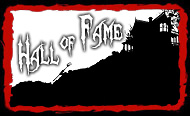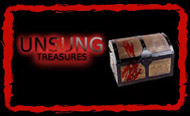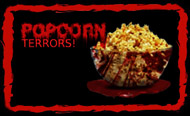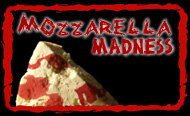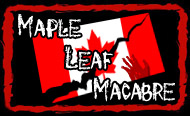
Of all the horror franchises, the Elm Street series might be the most difficult film for me to personally rank. Freddy has been near and dear to my heart for as long as I can remember, which sounds twisted but is, in fact, kind of awesome. At this point, I can barely remember a time in my life before I first glimpsed this charbroiled, razor-fingered maniac lounging in the trunk of a car one Saturday night during an episode of Freddy’s Nightmares. From that moment, I knew I had to see more, a perhaps unnatural reaction because A.) I was about four years old, and B.) have you seen an episode of Freddy’s Nightmares? At any rate, the first four entries became video store staples, with the others joining them with each new release well into my teens: if I wasn’t renting the tapes, then I was poring over their cover art, memorizing the blurbs and taking in the twisted imagery. To paraphrase a line from Wes Craven’s New Nightmare, Freddy was as big a presence in my life as Santa Claus. Don’t judge my parents too harshly, even though the alarmed teachers at my daycare did.
I turned out mostly okay, which is to say I lived to write this rambling preamble that also doubles as an obvious disclaimer: these films are practically like children to me, so keep in mind that these rankings involve razor-thin margins that could shift at any given time. It’s not that I really love any of them more or less than the other, but I don’t think anyone would let me get away with simply ranking all eight films as being equals. By the way, there are definitely only eight Nightmare on Elm Street films, so please don’t ask me why this list is missing a movie. It’s not.
Honorable mention: Freddy’s Nightmares (1988-89)



However, it certainly makes for an interesting deviation, as Jack Sholder retains Wes Craven’s lo-fi approach to create a truly frightening vision of suburbia under siege. Freddy was arguably never as scary again after this film, where he prowls through Jesse’s psyche like true home invader. His quips are kept to a minimum, allowing Englund to play up the Springwood Stalker’s genuinely menacing qualities. A fleeting shot of Freddy lurking outside might be the franchise’s most terrifying moment because it distills Freddy down to his predatory essence.
But what really makes this one an outlier is the lack of a true group dynamic that would be solidified with Part 3. Jesse finds solace in Lisa and a begrudging sort of friendship with Grady but spends the film largely isolated, a turn of events that emphasizes its queer subtext. Doing so in the midst of 80s gay panic was a bold movie and laid the foundation for this series to keep being about something more than mindless slashing, even as it stretched into later sequels.

Despite Stephen Hopkin’s admirable attempt to move the franchise back to its more horrific roots with a stunningly gothic visual palette, it’s still a movie where Freddy plays a clown prince at the height of his powers as a stand-up comedian. Depending on your persuasion, he either livens up an otherwise somber affair or unnecessarily deflates the serious, thoughtful attempt at a more grown-up sort of Elm Street movie. I used to count myself among the latter, but these days I’m very much okay with a scene where Freddy mounts a skateboard and turns into an over-the-top supervillain version of himself. Quite simply, life is too short to be Mad Online about Super Freddy. Obviously, contemporary audiences disagreed or were just plain bored by Freddy at this point, which put the Springwood Slasher on the path towards his first demise. (He’d get better, obviously.)
Note: I had the pleasure of participating in a chat marking The Dream Child’s 30th anniversary over at Daily Grindhouse with Nathan Smith. Check it out!

Given that New Line didn’t exactly break the bank to give its most famous creation a ceremonious farewell, Freddy’s Dead still manages to bring a sense of finality and closure to the franchise. Between the apocalyptic Springwood setting and the exploration of Freddy’s backstory, it feels just different and final enough, even though nobody was buying this film’s subtitle, even back in 1991. But if it had been the end, The Final Nightmare would have been fine enough: the dream sequences are as imaginative as ever (some might say too much so—these people are no fun), and Englund clearly relishes any opportunity to play Freddy, especially now that he’s gone full Loony Tunes, winking and nodding at the audience as he carries out his antics. There’s a sense that Freddy is no longer doing this for vengeance but for just plain fun, a trickster god wreaking havoc.
Freddy’s Dead is simply full of great moments: the killer opening title sequence, the bizarre trek through a vacant Springwood, a glimpse into the suburban lair where Freddy carried out his atrocities behind a green lawn and a picket fence. Also, this is the only Nightmare movie that gives you Yaphet Koto. It’s not a popular entry, but I unabashedly love this one, as it proves that the Nightmare series never completely ran out of steam, at least until New Line decided to skimp on the budget here. Just about the only major snag I have with this one is that the ending is a tad unimaginative in the way it dispatches Freddy by pulling him out of a dream; sure, it brings things full circle to the original’s climax, but it never sat well with me that Freddy dies simply from being blown up real good in the bowels of a youth shelter patrolled by lazy cops that apparently just let this place turn into an armory with troubled kids around. Luckily, Jason would come along and give Freddy a much more fitting, rousing send-off a decade later.

So, why does it drop in here at the middle of this list? Deep down, I suppose I’m ranking these things based on how quickly I’d pluck one of them off the shelf. Because most of them are cinematic comfort food, that could be any given one; however, New Nightmare has never quite become that for me. It’s not to say that this film isn’t entertaining, but its more cerebral approach doesn’t make it the sort of movie you just throw on for fun. No, this is one that commands attention in a way the others don’t. Something about it just doesn’t make for great background noise, nor is it the sort of movie you can drop in to catch some Freddy highlights for a quick hit. It’s probably the franchise’s true odd duck in this respect, which is why I’m sort of cheating by punting on it, sending it to the middle of the list, just behind my most nostalgic faves.

Here’s thing though: never underestimate the power of peak Renny Harlin to make those fumes explode into a conflagration of pop culture confection. You see a faded, slightly worn sedan; he sees a fucking Ferrari just waiting to roar back to life, ready to sling dust and dirt in your disbelieving face. And so The Dream Master barrels through its meager story with reckless abandon, turbo-charged by an MTV aesthetic that prioritizes flashy visuals, killer tunes, and outlandish personalities.
Nightmare 4 has all of this and then some. To this day, it remains my platonic ideal of what this franchise should be at its very least: slick, rollicking, fun entertainment bolstered by its indelible villain and his incredible dreamscapes, neither of which do too much to overshadow the victims, who remain the heart and soul of the film. I’m now twice the age of these characters, and I still want to be as cool as them when I grow up and make it to high school.

Obviously, it helps that Freddy himself—who would not quite be this type of genuinely scary boogeyman after the first sequel—is one of the most ingenious fictional creations of all-time. As envisioned by Craven, Robert Englund, and Robert Shaye, Krueger is a demented, phantasmal goblin, a truly perverse soul who delights in terrorizing his victims. There’s a common misconception that Freddy wasn’t funny at first, which is nonsense, of course: from the moment he haunts Tina’s first nightmare, he’s clearly dead-set on completely toying with her first. That personality would of course only become more outsized later on, but there’s a reason Freddy left an impression in the first place: Englund just has a maniacal glimmer in his eye for the entire movie, a clear sign that he was eager to make this a signature role rather than just another lumbering, slasher movie brute.

In doing so, Dream Warriors is careful not to stray too far, maintaining the delicate balance between pop fantasy and genuine terror. Freddy comes into his own here, as Englund takes that impish glimmer from the original and imagines the dream stalker as the emcee of a rollicking, demented haunted house. He’s still quite scary (the opening nightmare here is among the most ghoulish and macabre in the franchise), but this is also the point where Englund cemented Freddy as a genuine icon. The series itself would follow suit and never look back. Neither would I, for that matter.
comments powered by Disqus Ratings:



